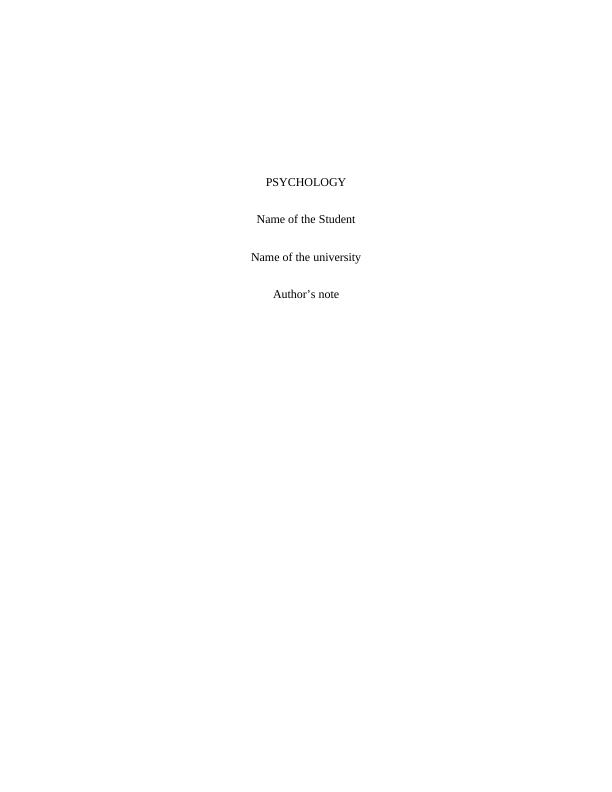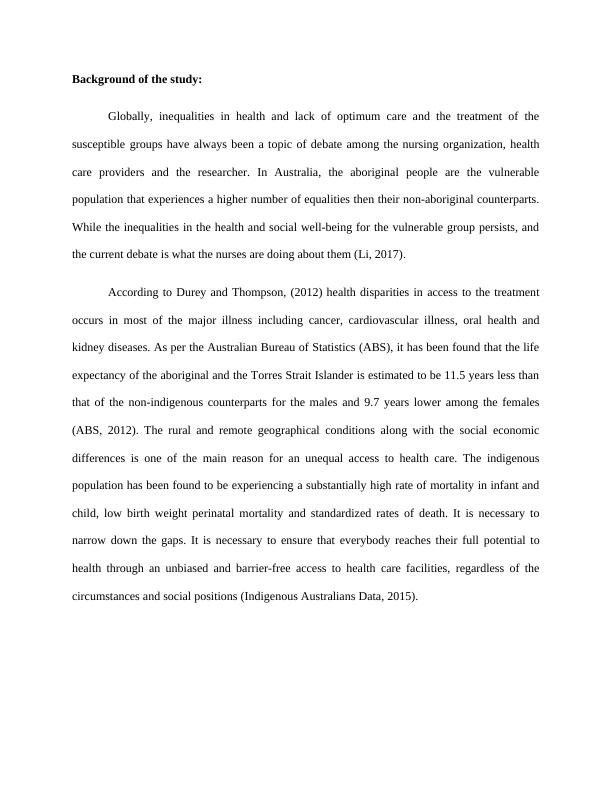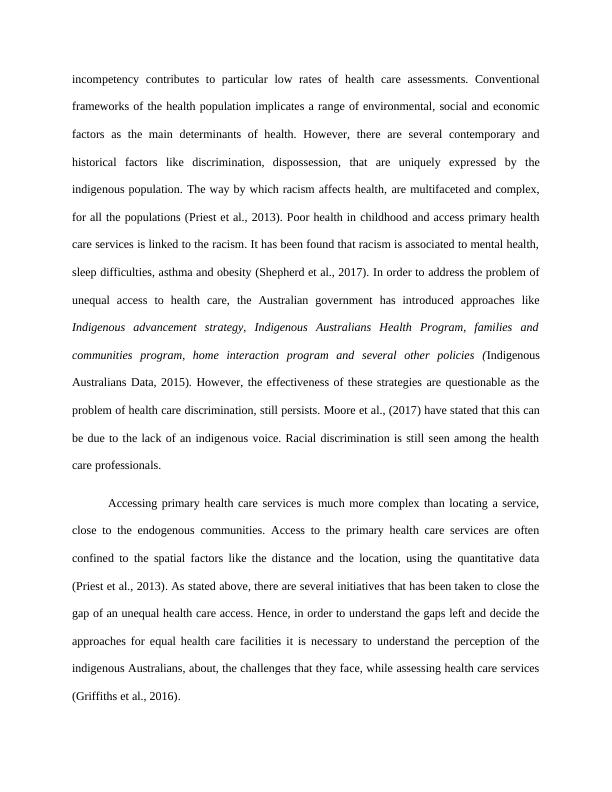Barriers to Equitable Healthcare Access for Aboriginal Australians and Torres Strait Islanders
Develop a research question, prepare interview and probe questions, identify four people to interview, and reflect on motivation and justification of research proposal.
11 Pages3101 Words58 Views
Added on 2023-01-18
About This Document
This research explores the barriers to equitable healthcare access for Aboriginal Australians and Torres Strait Islanders. It discusses the inequalities in health and social well-being for this vulnerable population, including cultural barriers, language and communication issues, and the impact of racism. The research methodology involves a phenomenological approach, with data collected through interviews with Aboriginal and Torres Strait Islander individuals living in remote areas of Australia.
Barriers to Equitable Healthcare Access for Aboriginal Australians and Torres Strait Islanders
Develop a research question, prepare interview and probe questions, identify four people to interview, and reflect on motivation and justification of research proposal.
Added on 2023-01-18
ShareRelated Documents
End of preview
Want to access all the pages? Upload your documents or become a member.
INDH2490: Foundations of Aboriginal and Torres Strait Islander
|8
|3111
|6
PART 13: Cultural Barriers which lead to inequitable health outcomes for Aboriginal Torres islanders
|11
|2125
|141
Exploring the impact of Policy on Health | Essay
|9
|2526
|15
Social Economic Status Question 2022
|11
|3131
|18
Paper on Health of Indigenous and Non-indigenous Australians
|8
|2422
|59
Reproductive and Sexual Health: Issues Faced by Aboriginals and Torres Strait Islanders in Australia
|4
|698
|208




